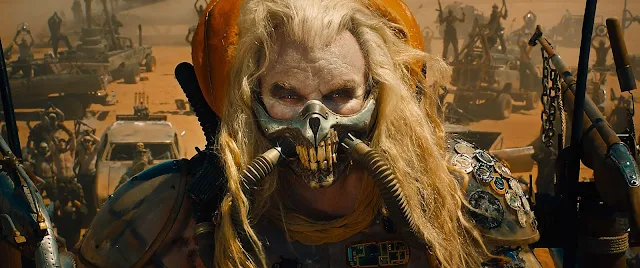The purpose of this review is to delve into the universal themes of morality, responsibility, and the limits of scientific knowledge as explored in "Frankenstein," and to discuss why these themes continue to resonate in our modern world.
Summary of the Novel
The narrative of "Frankenstein" is ingeniously framed through an epistolary structure, consisting of letters penned by Captain Robert Walton, an explorer on a daring expedition to the North Pole. Walton's ambition to make a significant contribution to human knowledge mirrors Victor Frankenstein's own aspirations, creating a thematic resonance right from the outset. During his expedition, Walton encounters a beleaguered and broken Victor Frankenstein, adrift in the icy wilderness. Frankenstein is a man shattered by the weight of his own ambitions, a living testament to the dangers of unchecked aspiration. Through Walton's letters to his sister, we are introduced to Frankenstein's harrowing tale, a narrative within a narrative that serves as a cautionary tale for Walton and, by extension, for the reader.Victor Frankenstein is portrayed as a young scientist brimming with ambition and a thirst for knowledge that knows no bounds. His obsession with the mysteries of life itself becomes the driving force behind years of dedicated study and experimentation. This culminates in a groundbreaking but ethically dubious achievement: the creation of sentient life.
Key events that unfold these themes include:
The Creation: Victor successfully animates the creature, but is immediately horrified by its grotesque appearance. This event sets the stage for the theme of morality, questioning the ethical implications of creating life.
Abandonment: Victor abandons his creation, refusing to take responsibility for his actions. This leads to the creature's loneliness and eventual descent into violence, highlighting the theme of responsibility.
The Creature's Plea: The creature, having educated itself and experienced the harshness of human judgment, confronts Victor and asks for a female companion. Victor initially agrees but later destroys the half-completed female creature, further emphasizing the theme of responsibility and introducing the limits of scientific knowledge.
Retribution and Tragedy: The creature takes revenge by killing those close to Victor, including his fiancée, Elizabeth. Victor vows to hunt down the creature but dies in the process, leaving the creature to wander the Arctic alone. This tragic conclusion serves as a cautionary tale about the dangers of unchecked scientific ambition, reinforcing the theme of the limits of scientific knowledge.
The novel is a labyrinth of ethical and philosophical questions wrapped in a chilling narrative, making it a timeless classic that continues to captivate readers and audiences alike.
Morality
One of the most compelling themes in "Frankenstein" is the question of morality, particularly the ethical implications of playing God. Victor Frankenstein's journey is a cautionary tale that delves into the complexities of moral choices in the realm of scientific discovery.His initial excitement at having unlocked the secret to creating life quickly turns into horror and regret as he confronts the consequences of his actions. The moment the creature opens its eyes, Victor realizes that he has crossed a moral boundary, one that society and perhaps even nature itself had set. His immediate abandonment of the creature is a tacit admission of his moral failure, a realization that he has committed an act for which he is not prepared to take responsibility.
This theme is not just a relic of the Romantic era but a universal concern that has only gained relevance in our modern world. Take, for example, the field of genetic engineering. The advent of CRISPR technology has made it possible to edit genes with unprecedented precision. While this holds the promise of eradicating genetic diseases, it also opens up ethical Pandora's boxes, such as the possibility of "designer babies."
The moral dilemma here is strikingly similar to that faced by Victor Frankenstein: Just because we can do something, does it mean we should?
Artificial Intelligence (AI) presents another modern parallel. As machine learning algorithms become more advanced, there is growing concern about the ethical implications of creating sentient or superintelligent entities. Questions arise about the moral responsibilities we have toward these entities and the potential consequences of creating beings that could surpass us in intelligence. Elon Musk's warning about AI being the "biggest existential threat" echoes the cautionary elements in "Frankenstein," reminding us that the moral questions posed by the novel are far from being resolved.
In both genetic engineering and AI, the thrill of scientific breakthroughs can easily overshadow the ethical considerations, much like Victor Frankenstein's initial excitement blinded him to the moral implications of his actions. The universality of this theme lies in its enduring relevance: as we stand on the cusp of scientific advancements that challenge the very essence of life and intelligence, "Frankenstein" serves as a timeless reminder to tread carefully in domains where we risk playing God.
Responsibility
The theme of responsibility, or rather the lack thereof, is another cornerstone of "Frankenstein." Victor Frankenstein's failure to take responsibility for his creation has dire consequences, not just for him but for society at large. His initial abandonment of the creature is a pivotal moment that sets the stage for the unfolding tragedy. The creature, left to navigate the world without guidance or even basic understanding, experiences loneliness, rejection, and eventually turns to violence. Victor's refusal to create a companion for the creature further exacerbates this abandonment, leading to a chain of events that culminate in the deaths of his loved ones.Victor's lack of responsibility serves as a cautionary tale about the consequences of neglecting the ethical and social responsibilities that come with scientific and technological advancements. His actions—or inactions—reflect a broader, more universal issue: the ethical responsibility that creators have toward their creations and the societal impact of their work.
This theme is incredibly relevant in today's world, especially in the realm of technology.
For instance, the use of AI in predictive policing has raised concerns about algorithmic bias, potentially leading to unjust profiling and discrimination. Similarly, the deployment of autonomous weapons systems in military conflicts opens up a Pandora's box of ethical questions.
Who is responsible if an AI system wrongly identifies a civilian as a threat? The tech companies that developed the algorithm? The military that deployed it? Or the policymakers who allowed its use?
Limits of Scientific Knowledge
The third and equally significant theme in "Frankenstein" is the exploration of the limits of scientific knowledge. The novel serves as a grim reminder that the pursuit of knowledge, while noble, is fraught with risks when it crosses ethical and natural boundaries.Victor Frankenstein's ambition to "penetrate the secrets of nature" leads him to a discovery that he is ill-equipped to manage. The tragic outcomes for both Victor and the creature underscore the dangers of venturing into uncharted scientific territories without fully understanding the potential repercussions.
Victor's ambition blinds him to the ethical and moral considerations of his actions. His failure to foresee the consequences of creating life—especially a life that he abandons—results in a series of tragedies, including the deaths of his younger brother William, his best friend Henry Clerval, and his fiancée Elizabeth. The creature, too, suffers immensely, not just from societal rejection but from an existential crisis, questioning the purpose of his miserable existence. These tragic outcomes serve as a stark warning about the perils of pushing the boundaries of scientific knowledge without adequate foresight and preparation.
This theme is incredibly pertinent to current debates surrounding the limitations and potential risks of scientific exploration, especially in the realm of Artificial Intelligence. One of the most discussed topics in this context is the concept of AI singularity—the hypothetical point where AI systems become self-improving, leading to rapid advancements beyond human control or understanding.
Prominent figures in science and technology, such as Stephen Hawking and Elon Musk, have expressed concerns about the existential risks posed by uncontrolled AI. The fear is that, much like Victor Frankenstein's creature, an autonomous AI could act in ways that are harmful to humanity if it is not properly designed or controlled.
The discussions around AI singularity echo the cautionary tale told in "Frankenstein," urging us to consider the ethical and existential questions that come with scientific advancements. As we stand on the brink of potentially revolutionary discoveries in AI, biotechnology, and other fields, "Frankenstein" serves as a timeless moral compass, reminding us to weigh the potential risks against the benefits and to proceed with a sense of responsibility and ethical integrity.
Influence on Popular Culture
The indelible impact of "Frankenstein" extends far beyond the literary world, permeating various forms of popular culture, particularly films and TV shows. These adaptations often serve as modern interpretations of the novel's themes, adapting or expanding upon them to fit contemporary contexts.One of the most iconic adaptations is the 1931 film "Frankenstein," directed by James Whale. This film, like the novel, delves into the moral implications of creating life but does so through the lens of early 20th-century anxieties about industrialization and scientific experimentation. The portrayal of Dr. Frankenstein as a tragic figure consumed by his own hubris echoes the novel's cautionary stance on the limits of human knowledge and the responsibilities that come with it.
The themes of "Frankenstein" have also been explored in various TV shows, such as "Penny Dreadful," where the character of Victor Frankenstein and his creature are reimagined in a Victorian setting. The show expands on the themes of morality and responsibility, adding layers of complexity that resonate with modern audiences, such as questions about identity and the nature of evil.
So why do these adaptations continue to captivate audiences more than two centuries after the novel's publication? The answer lies in the timelessness of its themes. Whether it's the ethical dilemmas surrounding scientific advancements or the existential questions about the human condition, the issues raised in "Frankenstein" are universal. They tap into fundamental human concerns that are as relevant today as they were in Mary Shelley's time.
Conclusion
From Victor's initial excitement to his subsequent regret, the novel questions the morality of playing God, a theme that continues to be relevant in contemporary debates surrounding genetic engineering and artificial intelligence.
The lack of responsibility exhibited by Victor towards his creation and the ensuing consequences serve as a stark reminder of the ethical obligations that accompany scientific and technological advancements. This theme is especially pertinent today, as we consider the responsibilities of tech companies in the ethical deployment of AI.
Furthermore, the novel warns us of the dangers of pushing the boundaries of scientific knowledge without adequate ethical consideration. As discussions about the potential risks of AI singularity gain traction, "Frankenstein" remains a relevant moral compass guiding these debates.
The novel's enduring influence on popular culture, particularly in films and TV shows, attests to the universality of its themes.
















%20scar.webp)







.jpg)













